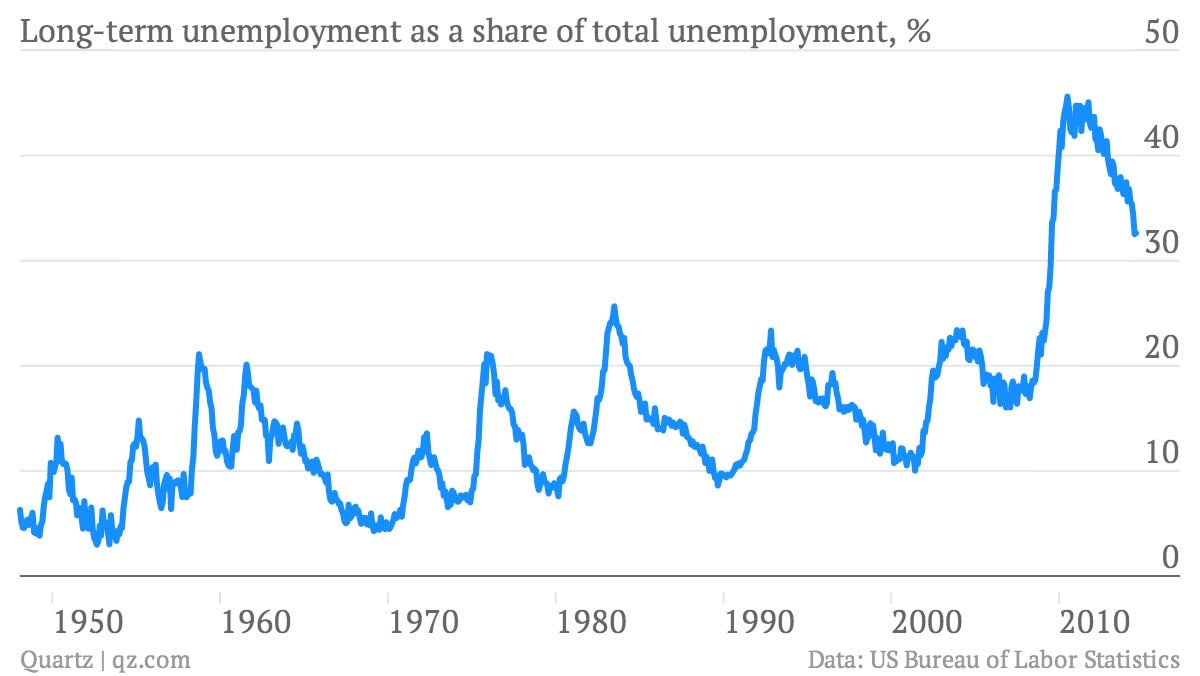The most important charts from yet another solid US jobs report
Pretty darn good.

Pretty darn good.
The US economy pumped out 209,000 new jobs in July, with the unemployment rate ticking up to 6.2% from June’s 6.1%.
After the July report the US is 634,000 jobs into a real expansion from the pre-crisis peak.
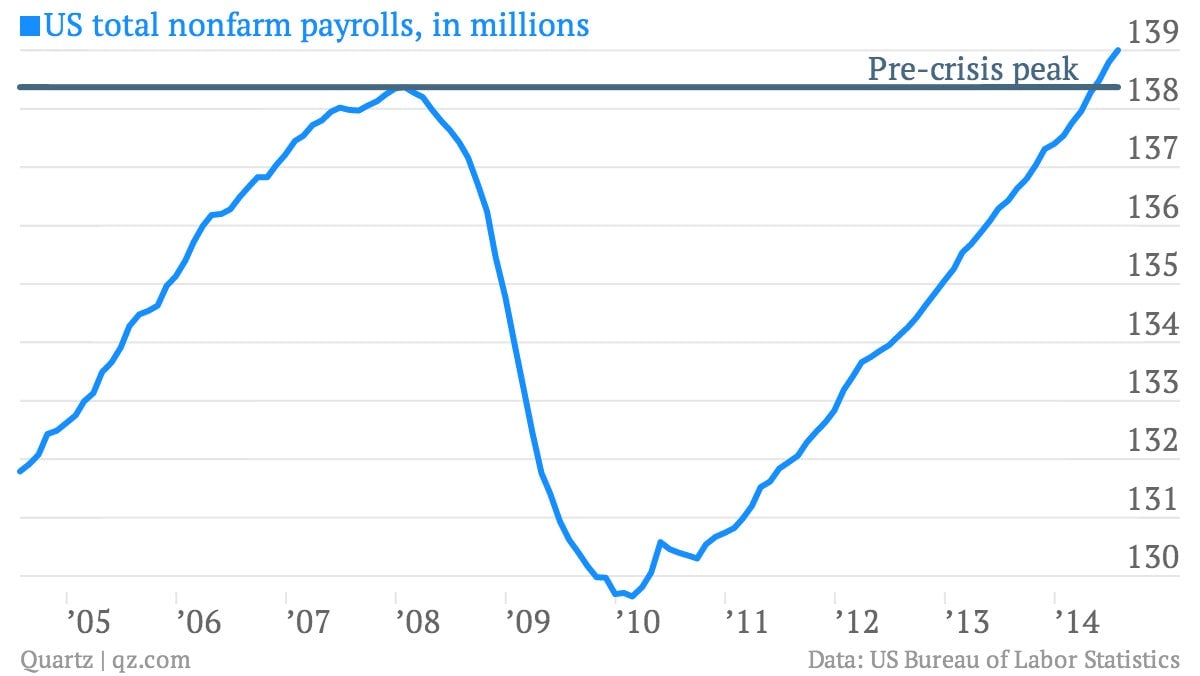
Labor force participation ticked up to 62.9%, but is still at lows not seen since the late 1970s.
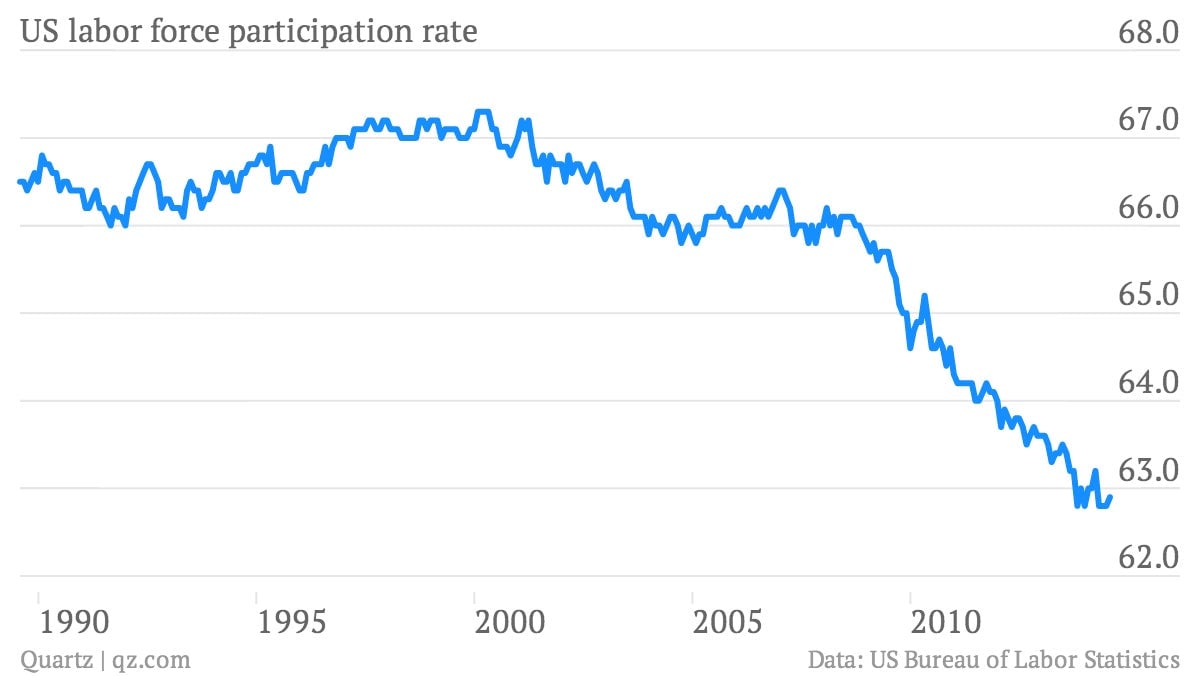
Average earnings gains continue to be muted. All private-sector workers have seen average hourly earnings rise 2%, while production line and nonsupervisory workers have seen slightly better gains, according to BLS data.
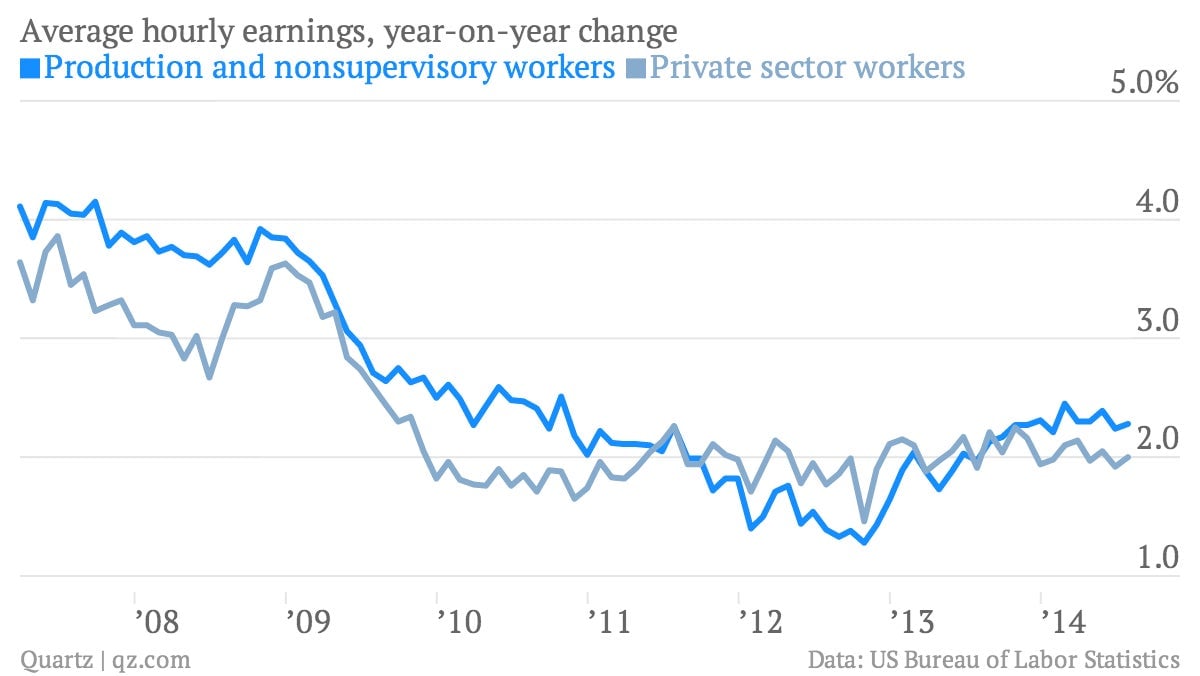
July was the sixth consecutive month that the US produced more than 200,000 jobs in a month, a feat that hasn’t been accomplished since the late 1990s.
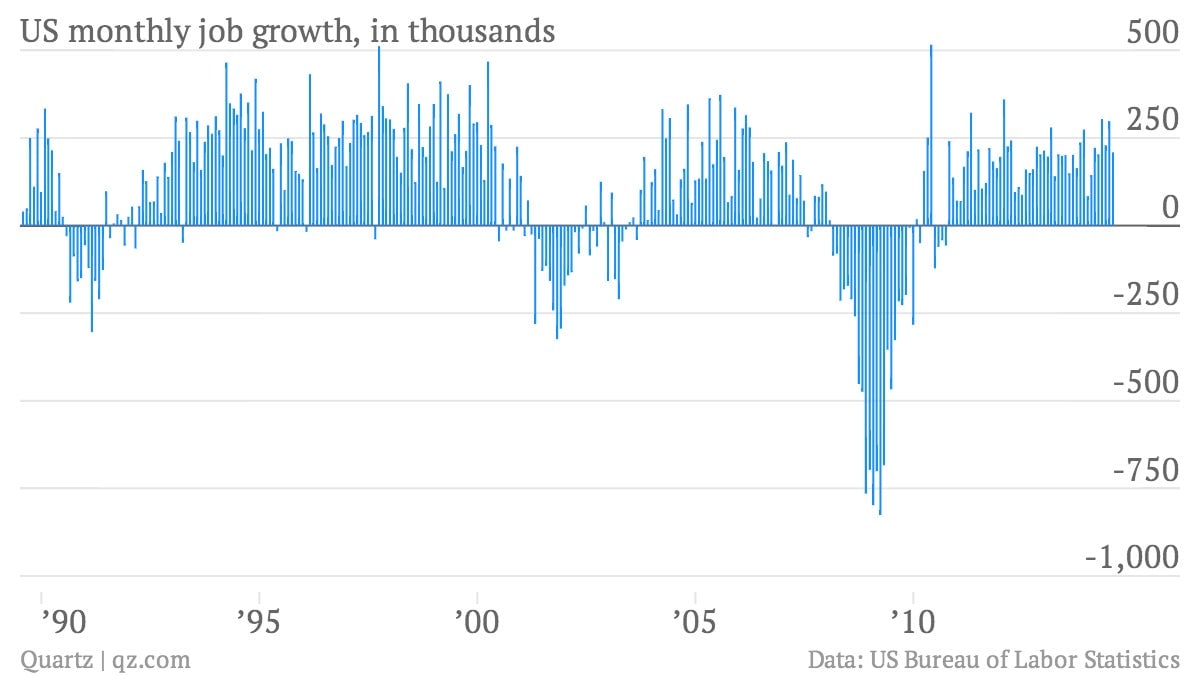
Long-term unemployment, while improving, remains high. And that’s a key reason why the Fed believes it needs to keep giving the economy support.
